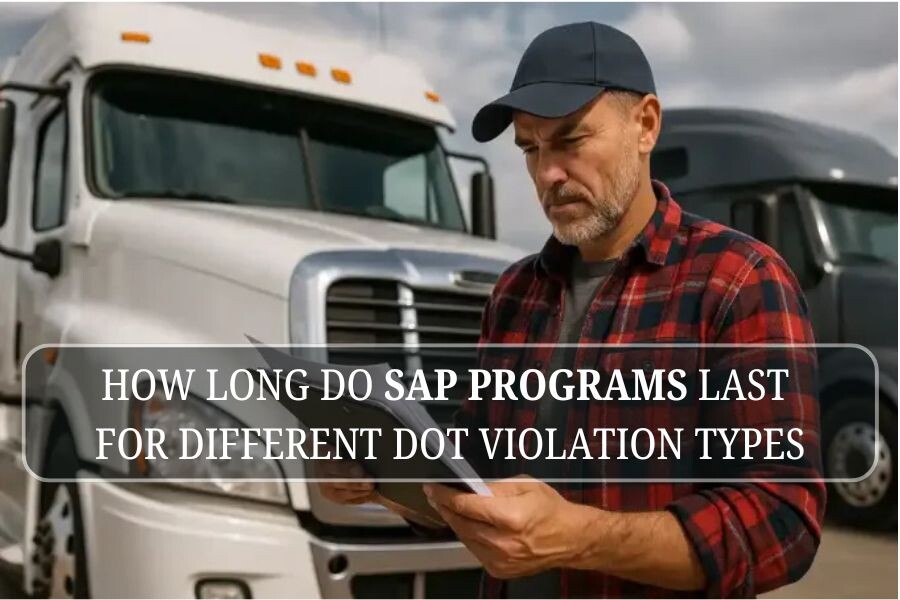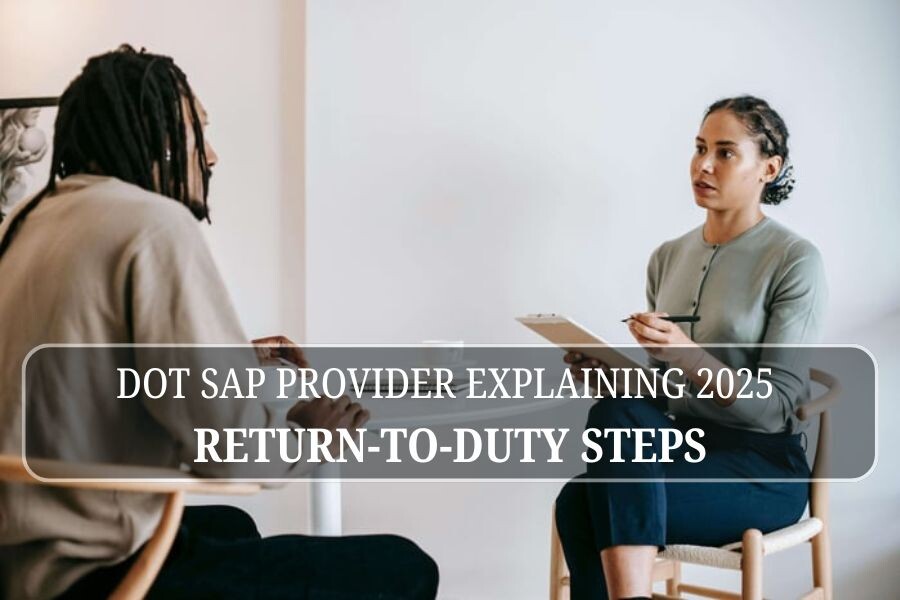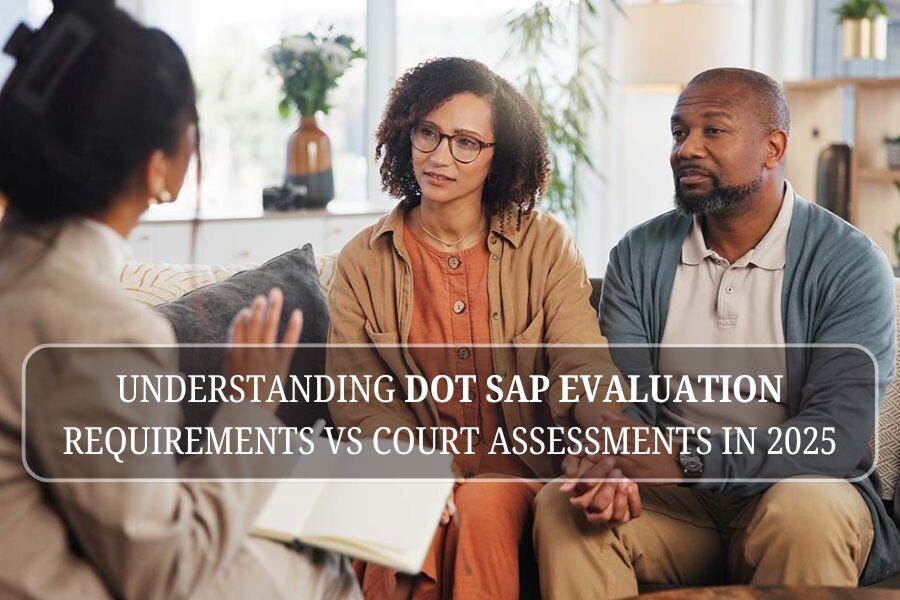Choosing Between Online and In-Person SAP Evaluations
After a DOT drug or alcohol test violation, you’re required to undergo a SAP evaluation. But in 2025, you now have two options: online (telehealth) or in-person. So which one is better for your situation?
This guide breaks down the pros, cons, and compliance factors of both online vs in-person SAP evaluations, helping you make a confident, compliant choice.
What Is a SAP Evaluation?
A Substance Abuse Professional (SAP) evaluation is a DOT-mandated assessment that determines your readiness to return to duty. It includes:
- An initial evaluation
- Recommendation of treatment or education
- A follow-up evaluation
- Reporting to the FMCSA Clearinghouse
Both online and in-person formats must follow DOT’s 49 CFR Part 40 rules.
Key Differences Between Online and In-Person SAP Evaluations
| Feature | Online SAP Evaluation | In-Person SAP Evaluation |
|---|---|---|
| Availability | Nationwide (all 50 states) | Limited to local area |
| Convenience | Conducted from home or office | Requires travel and scheduling |
| Scheduling Speed | Same-day or 24–48 hrs | 3–7 days wait time |
| Compliance (2025) | Fully DOT-compliant if SAP is certified | Fully DOT-compliant |
| Documentation Speed | Faster via digital delivery | May take longer |
🚨 Both formats are legally valid—as long as the SAP is DOT-qualified.
Benefits of Online SAP Evaluations in 2025
- ✅ Faster turnaround for evaluations and documents
- ✅ No travel—save time and money
- ✅ More appointment availability (especially after hours)
- ✅ Ideal for rural drivers or those without local SAPs
- ✅ Secure platforms ensure confidentiality
When to Choose In-Person SAP Evaluations
Consider in-person evaluations if:
- 🧠 You prefer face-to-face interaction
- 📍 You live near a DOT-qualified SAP
- 🏥 Your case is complex and requires deep assessment
- 🛠️ Your treatment facility requires coordination with a local SAP
Is Telehealth SAP Evaluation Accepted by FMCSA?
Yes. As of 2025, the FMCSA and DOT accept telehealth SAP evaluations as long as:
- The SAP is DOT-certified and properly documents the process
- Secure, HIPAA-compliant video platforms are used
- All documentation is submitted to the FMCSA Clearinghouse
What Do Online SAP Evaluations Cost in 2025?
| Evaluation Type | Price Range |
| Online Evaluation | $300–$400 |
| In-Person Evaluation | $350–$500 |
💡 Online options are usually cheaper and include faster documentation delivery.
AACS Counseling Offers Both Options Nationwide
At AACS Counseling, we provide:
- ✔️ Certified telehealth SAP evaluations in all 50 states
- ✔️ Walk-in appointments available in major U.S. cities
- ✔️ Fast reports and FMCSA submission
- ✔️ Affordable pricing with no hidden fees
📞 Call us today to schedule the option that works best for you.
Conclusion: Choose the SAP Evaluation Format That Fits Your Needs
Whether you pick an online or in-person SAP evaluation, the most important thing is ensuring it’s DOT-compliant. Online evaluations offer more flexibility and speed in 2025, while in-person meetings may feel more personal.
🏁 The best SAP evaluation is the one that gets you back to work quickly and legally.










